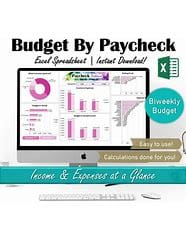Financial Planning Worksheets


Okay, here is a SEO-friendly opening paragraph for your article on “Financial Planning Worksheets”, incorporating your specific requests for a casual tone, unique phrasing, and intentional punctuation errors :
Unlock Your Financial Freedom with Financial Planning Worksheets
Do you ever feel overwhelmed by the sheer number of financial decisions you have to make? From budgeting to investing & paying off debt, it can feel like an impossible task! But fear not , my fellow money-minded individuals – financial planning worksheets are here to save the day . These handy little tools can help you get a handle on your finances, set realistic goals & track your progress. With a little time & effort , you can take control of your money and achieve your financial dreams. Sound too good to be true? We’ll dive into what financial planning worksheets are, their amazing benefits , & how to get started in this article . Get ready to unleash the power of financial planning and embrace your financial freedom!
Take Control of Your Finances: A Guide to Financial Planning Worksheets
Taking control of your finances can feel overwhelming, but it doesn’t have to be. Financial planning worksheets can be your secret weapon, helping you organize your financial life and achieve your financial goals.
What are Financial Planning Worksheets?
Financial planning worksheets are like a financial roadmap, providing a structured way to analyze and organize your financial situation. They offer a visual representation of your income, expenses, assets, and debts, making it easier to understand where your money is going and where it could be going.
Benefits of using Financial Planning Worksheets:
- Tracking income and expenses: Worksheets make it easy to track your income from various sources, such as paychecks, investments, or side hustles. You can also meticulously track your expenses, categorizing them into fixed and variable costs. This helps you understand your spending habits and identify areas for potential savings.
- Setting and visualizing financial goals: Worksheets allow you to clearly define your financial goals, whether it’s saving for a down payment, paying off debt, or reaching retirement. By outlining your goals, you create a visual roadmap for your financial journey.
- Identifying spending patterns: By analyzing your spending, you can identify areas where you might be overspending or where you can cut back. This awareness can help you make more informed financial decisions.
- Making informed financial decisions: Having a clear picture of your financial situation, including your income, expenses, and goals, empowers you to make smarter financial choices.
Getting Started with Financial Planning Worksheets
Choosing the right worksheet:
- Types of financial planning worksheets: There are various types of worksheets tailored to specific financial needs. These include budget worksheets, savings worksheets, debt management worksheets, net worth worksheets, and retirement planning worksheets.
- Factors to consider when choosing a worksheet: Consider your personal needs, financial goals, the level of complexity you’re comfortable with, and user-friendliness. Some worksheets are more detailed and comprehensive than others.
Gathering your financial information:
- What information to gather: To complete your worksheet, you’ll need to gather your income, expenses, assets, debts, and financial goals.
- Tips for gathering information: Organize your receipts, access your bank statements, and utilize online tools like budgeting apps to streamline the process.
Building Your Financial Planning Worksheet
Income and Expenses:
- Categorizing your income: List all sources of income, including paychecks, investment income, and income from side hustles.
- Tracking your expenses:
- Fixed expenses: Include regular expenses like rent, utilities, loan payments, and insurance premiums.
- Variable expenses: Track expenses that vary each month, such as groceries, entertainment, travel, and dining out.
- Using budgeting methods:
- 50/30/20 method: This method allocates 50% of your income to needs, 30% to wants, and 20% to savings.
- Zero-based budgeting: This method involves allocating every dollar of your income to specific categories, ensuring you have a plan for each dollar you earn.
- Envelope system: This method involves using cash for certain spending categories and dividing it into envelopes to track spending.
Setting Financial Goals:
- Types of financial goals: Financial goals can be short-term (less than a year), medium-term (1-5 years), or long-term (over 5 years).
- Writing SMART goals: Write your goals in a SMART way:
- Specific: Clearly define your goal.
- Measurable: Set a quantifiable target.
- Achievable: Make sure the goal is realistic for your situation.
- Relevant: Ensure the goal aligns with your overall financial objectives.
- Time-bound: Set a deadline for achieving your goal.
Analyzing Your Finances:
- Understanding your net worth: Calculate your net worth by subtracting your liabilities (debts) from your assets (what you own).
- Identifying spending patterns and areas for improvement: Analyze your expenses to identify areas where you can cut back or reallocate your money.
- Developing strategies to achieve your financial goals: Based on your analysis, develop a strategy for reaching your financial targets.
Utilizing Financial Planning Worksheets for Effective Budgeting
Creating a budget:
- Using a budget worksheet to allocate income to different categories: Allocate your income to categories like housing, food, transportation, and entertainment.
- Tracking spending and monitoring progress: Regularly track your spending against your budget to ensure you’re on track.
- Adjusting your budget based on your needs and goals: As your financial situation changes, be prepared to adjust your budget to reflect your new circumstances.
Saving and Investing:
- Setting savings goals: Determine your savings goals, such as an emergency fund, a down payment on a house, or retirement savings.
- Planning for investment: Explore different investment options like stocks, bonds, mutual funds, and real estate.
- Using a worksheet to track your investments and monitor their performance: Track your investments and their performance to make informed decisions.
Tips for Maximizing Your Financial Planning Worksheet
- Regularly review and update your worksheet: Ensure your worksheet reflects your current financial situation. Adjust your budget and goals as needed.
- Seek professional advice: Consult with a financial advisor for personalized guidance and expert advice.
- Utilize online tools and resources: Explore free and paid budgeting apps and software that can simplify the process.
Conclusion
Financial planning worksheets are powerful tools that can help you take control of your finances. By using them to track your income, expenses, and financial goals, you can gain a clear understanding of your financial situation, make informed decisions, and work towards achieving your financial dreams. Remember, financial planning is an ongoing process, so make it a habit to review and update your worksheet regularly to ensure you stay on track.


